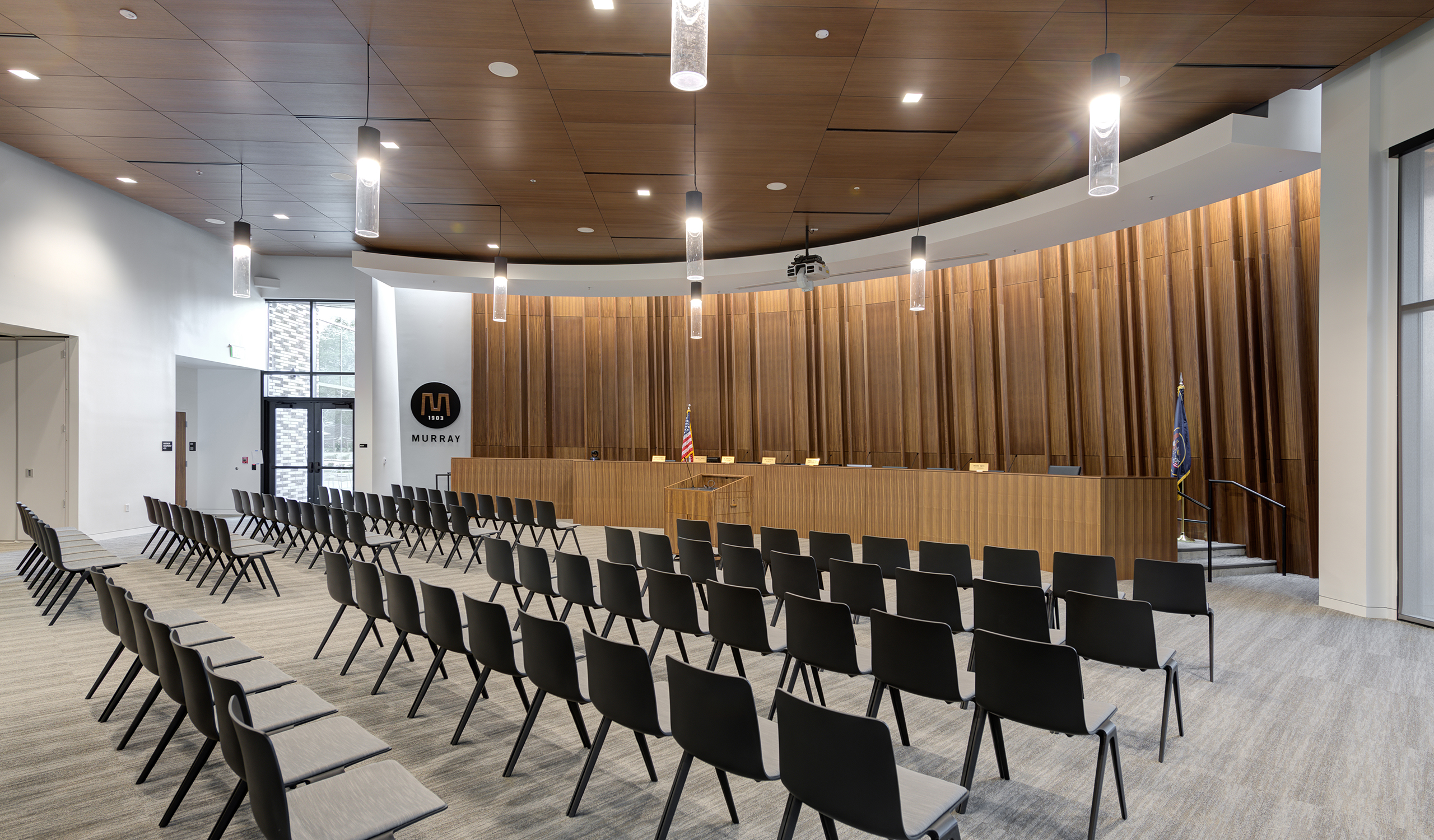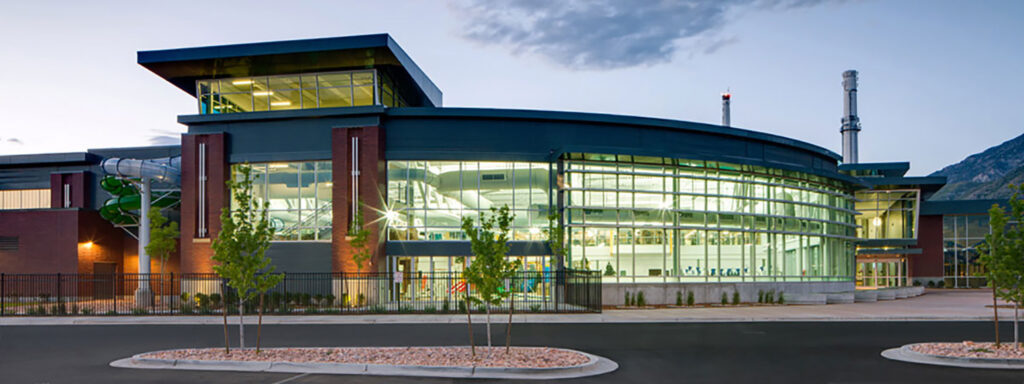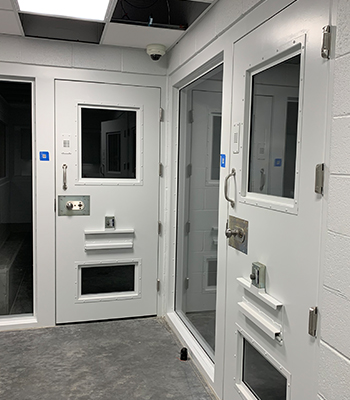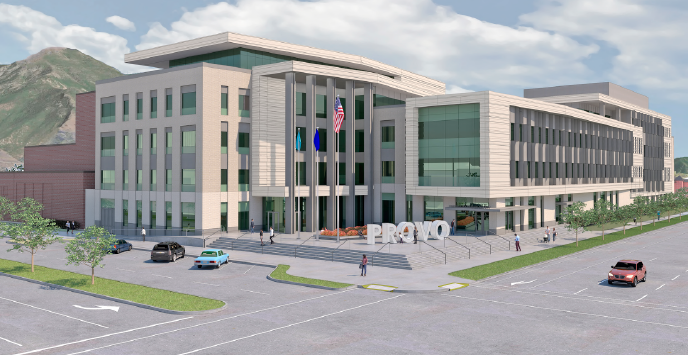Every construction project has unique variables to consider, and publicly funded facilities are no exception. Working with taxpayer dollars, numerous stakeholders, and sometimes thousands of end-users can be a delicate process long before any dirt is turned. And when it comes collaborating with public clients, Layton has skin in the game. Why? Our teams aren’t just working in these communities, we’re living in them.
Our Civic Duty: Knowing our Audience
Few projects garner more attention from the public than those directly funded by the public.
Within the walls of almost every municipal or county facility, residents and visitors access vital public services, make connections within the community, engage with their elected officials, and even develop healthy lifestyles (when was the last time you swam laps at your local rec center?). While the approval process to fund and build these projects can span several years and go through multiple administrations, the public stays the same: they’re invested.
“Predictability from the start is critical on municipal and governmental work, as the eyes of the community are focused on the end results,” said Layton Executive Vice President Jeff Palmer, who oversees projects in the Mountain West region. Plus, a new public facility “fosters more community pride than a generic office building or a hotel people may never step foot in.”
These projects aren’t just a reflection of the communities they serve either. Behind every new public building is an elected official who campaigned for it, or a representative responsible for getting it funded and approved. These ventures reflect them and the promises they’ve made to their constituents, and Layton takes great effort to deliver on what was promised.
Lessons Worth Sharing
Having partnered with over 60 cities and counties to build their new facilities, Layton knows the value of championing the public perspective, fostering effective communication with all stakeholders, and maximizing the value of every dollar spent. We also know that working in this space requires an emphasis on several key factors:
1. Engage early, collaborate, and make the process as seamless as possible.
The overarching goal for any municipal or county project is always the same: serve the public. Whether it’s a recreation center, city hall, or county jail, the function, layout, and every other aspect of the building must meet the community’s needs.
While cost is an important factor, especially considering tax dollars are at work, delivering certainty at every step is essential. In most cases, the city managers or county public works officials who oversee these projects haven’t been through a full construction cycle and have regular full-time responsibilities to attend to. “We don’t expect these clients to be experts on the building process, so we see it as our job to make their experience with it as seamless as possible,” Palmer said.
Layton engages early (often years early), meeting with officials to help them understand and confidently assess delivery methods, material options, and what to look for when selecting an architect. Our project teams add value to this stage because they’ve facilitated and participated in hundreds of meetings to consult on things like building siting, sustainability, material durability, security, cost impacts, mechanical systems, and more.
“I can’t overstate the importance of having a team of experienced builders that’s been through this process,” Palmer explains. “These conversations allow us to share lessons we’ve learned on what works and what doesn’t, and that can be invaluable to our public clients.”
“Some of the most critical project decisions are made before construction begins,” said Scott Henderson, Provo City Recreation Division Director, after we completed our first project for the city of Provo in Utah. “[Layton] assisted us before we went out for bond election and walked me through the different options. This information allowed us to look for value added features and deliver a design completely unique to our project.”
Provo Community Recreation Center
Collaboration is vital, and it doesn’t stop with the client.
“We work arm in arm with the architects and engineers to maintain design intent and achieve a design that satisfies the objectives of the project,” says Palmer. “Our purpose is to facilitate discussions to make sure budget, schedule, and material implications of design decisions are understood and agreed to.” Why? Because once a decision is made, it’s difficult for city or county officials to go back to their boards to get approval on changes.
2. Transparency, transparency, transparency.
In line with predictability and collaboration, transparency in public work is a requirement, not an option. Being transparent is crucial to ensuring accountability and maintaining public trust.
“The approval process on a publicly funded project is entirely different,” said Layton Executive Vice President Tyler Dillon, who oversees West Coast operations. “Certain decisions have to be taken to the public or to a council for approval. As the contractor, this means we don’t have the luxury of time to resolve issues as they come up so we must stay way ahead of them. We keep thorough records, perform extensive constructability reviews, and anticipate all possible scenarios that would require a decision to be made up front so elected officials can share the information with the public for approval.”
Transparency also fosters trust by enabling the public to participate in and monitor the progress of the project. When people have access to information about the decision-making process, budget allocations, and project performance, it enhances their confidence in their local leaders. “An open dialogue with the community creates an avenue for addressing concerns, resolving conflicts, and building consensus” said Dillon.
Accounting for so many unique, behind-the-scenes variables can be challenging for a contractor that’s accustomed to the standard design-bid-build method of private work. And Dillon adds, “If you don’t have a construction team that understands how to work with the public process, it can really derail a project.”
Layton EVP, Tyler Dillon said, “Through good scheduling and planning, we’re able to communicate any issues to publicly elected officials so they have time to determine the resolution. Keeping them in the loop is paramount.”
3. No matter the type, these projects must be built for the long haul.
While controlling the project budget is always top of mind, thoughtful selection of efficient systems and durable materials is vital, as these buildings need to be constructed for sustained usage and cost-effective operation.
A community recreation center, for example, is meant for frequent and and heavy use. Therefore, even the most basic materials for these spaces are different from those used in other buildings, and all must be analyzed for durability, functionality, and most importantly, safety.
Mechanical systems in public buildings require meticulous evaluation too. They must be efficient and control utility costs over time, be easy to maintain, and also stay compliant with local energy codes.
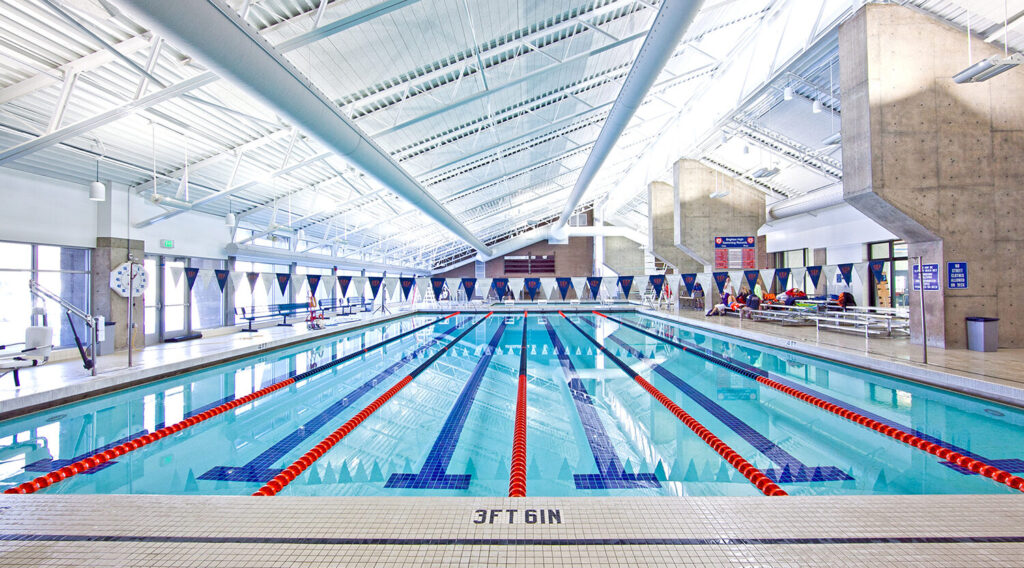
Cottonwood Heights Community Recreation Center
When assessing, selecting, and installing materials for these buildings, Layton plans for the most extreme factors as well.
Governmental buildings specifically are susceptible to various threats. Whether from acts of terrorism or natural disasters, these structures can be vulnerable to damage if not properly designed and ‘hardened.’ This requires acute attention to material selection and a robust quality control process.
“Any utility hub or administrative project that serves the public needs to be able to withstand almost anything so it can continue operating during a crisis,” Dillon says. “For example, during preconstruction of the Moulton Niguel Water District facility , we focused heavily on proper material selection. Then during construction, our focus shifted to rigorous quality control, not only to make sure everything was easy to maintain but that it was properly installed to withstand potential threats.”
Finding the optimal balance among all variables is essential, and when it comes to making decisions on all of this, Layton works with our public clients to offer a range of options that meet their needs and preferences.
4. Maintaining flexibility and accounting for multiple uses.
With any governmental project, we carefully consider the diverse uses each building will fulfill and the level of security each will demand.
“City halls aren’t just everyday office buildings,” Palmer suggests. “They serve multiple functions, and each function can require the installation of vastly different materials.”
The overall scope of a city hall includes both public and secure spaces within one building. “While completing a council chambers with fine wood finishes, we can be simultaneously installing hardened, detention-grade materials for holding cells in public safety areas. That’s a lot to account for, and each has its own standards to maintain,” states Palmer.
We also work with the design team to account for and anticipate future needs, technology advancements, and changing trends that may impact the building. Flexible floor plans, modular construction, and adaptable infrastructure enable the building to accommodate future changes without major renovations or disruptions.
The fine wood finish work in the pressroom vs the hardened detention materials of the holding cells at West Valley City Police Department headquarters.
As we consider the multiple uses of a new building, we’re also mindful of how existing structures can be repurposed and reused.
In Arizona, Maricopa County officials had to decide whether to demolish an old county jail or convert the existing structure into something more useful. “We’ve been working with Maricopa County for over 15 years at this point,” said Layton Executive Vice President Andrew Geier, who oversees the Southwest region. “No project is too large or small for us—they know we’ll go to bat for them.”
Layton consulted with the county on the opportunity. “Most contractors balked at the idea of repurposing what was essentially a concrete bunker,” said Geier, “But the bones were there, the structure still had a lot of life left in it, and Maricopa was open to doing something big.”
The county opted to retrofit, and Layton transformed the space, taking a once secure, closed, and fortified structure and turning it into an open, welcoming workspace with daylight and views of downtown Phoenix.
By repurposing the building, “taxpayers saved almost $20 million in demolition costs alone, not to mention the cost of replacing the building, which would have added another $30 million to the bill,” said Geier, himself an invested Maricopa County resident. They also gained a durable building that will be used well into the future.
Added benefits: The decision to repurpose rather than demolish the Maricopa County Jail also meant eliminating the need to send approximately 2.1 million pounds of reinforced steel and 65 million pounds of concrete waste to landfills.
Keys to the City: Putting Our Lessons Learned to the Test
When it comes to completing a project for a new public client, “Layton doesn’t just show up hoping we do a good job,” Palmer states. “We go to great lengths to understand perspectives and educate on the process long before these projects take any real shape, because we’re out to build meaningful, long-term relationships and be part of the community.”
Nowhere has this been more evident than in the city of Provo in Utah, where over the last decade, Layton has earned the trust of the city’s leaders and has become one of their preferred contractors.
Provo as a Case Study
In 2011, Layton broke ground on our first project for Provo city: a new recreation center. But our work with Provo on this facility actually started several years prior.
“Our goal from the beginning was to show that Layton is a true partner and that we understand the political world they’re operating in,” said Palmer. The project team set out to provide city officials with more than just cost estimating and administrative support and “spent two years learning and addressing [Provo’s] hot buttons so they’d have options on the procurement and design of their new facility.”
All this enabled us to get our foot in the door, and we were given the opportunity to perform.
After two years of consulting and another two years of preconstruction and construction, Parks and Rec Division Director Scott Henderson gave Layton the kind of review that contractors’ dreams are made of: “I still tell all who compliment me on the construction quality of this building, ‘Why would you choose anybody besides Layton to build a recreation center?'”
Though we were thrilled with these accolades, we knew they were just the starting point, and if Provo moved forward with Layton on any future projects, their expectations would be elevated out the gate.
Leaving nothing to chance, we began consulting with the city on what would eventually be their new public utilities headquarters, a uniquely challenging endeavor that included the demolition of the 76-year-old power plant, cooling tower, and two 225-foot-tall smokestacks.
Through it all, our goal remained the same: We wanted Provo City to come away from the experience enjoying the construction process and viewing Layton as a public partner before, during, and after construction.
“From the beginning to the end of the project, as the owner, we were constantly included, informed, updated, and educated as to the construction process,” said Provo Power Assistant Director Scott Bunker. He continued, “We always felt as though our concerns were the most important.”
Provo Power is a LEED Gold-certified campus that includes a central command station, office, warehouse, and maintenance bays, and parking spaces.
After completing Provo Power, Layton’s relationship with the city continued to strengthen, having been brought on to perform a terminal expansion at Provo Airport and build a new fire station. Each project presented different challenges, but both came down to the close collaboration, transparency, and commitment to quality that proved paramount before.
Raising the Bar: A Closer Look at the Provo City Center
Our latest endeavor in Provo was their largest undertaking to date: a 200,000 SF city center that would function as the headquarters for all elected officials and representatives, police, and fire department staff, and house almost every city employee we’d developed relationships with over the years. Unlike our previous projects for Provo, there were a few additional variables that made this public project feel a little more public. And Layton’s processes would be in the spotlight like never before.
A rendering of the future Provo City Center, courtesy of VCBO Architecture.
At the Center of Center Street
Construction of this six-story complex would take place on a prominent corner of downtown Provo—one with little laydown space and serious daily traffic. Center Street is one of only three exits off the nearby I-15 freeway granting access to Utah’s second fastest growing city—enabling the public to constantly monitor the progress of their new city headquarters. Prior to construction, Henderson said, “I’d like to think the city hall will set the expectation for the entire block.”
The project site also sat next door to the existing city hall and police headquarters, giving the very council members and city representatives who approved this project a daily, front-row seat to inspect the quality of Layton’s work and processes.
What’s more? Provo City Mayor Michelle Kaufusi—the face of this project and the main driver behind getting it funded—could drop by at any moment and often did. “I [wanted] to come on site and ask questions,” she said, adding, “[Layton] was so kind and so willing to sit down and educate me. It was a gamechanger.”
“I’d like to think the city hall will set the expectation for the entire block.” – Scott Henderson, project representative and recreation division director for Provo Parks and Recreation.
As for the actual construction process, the Provo City Center pressure-tested nearly every Layton process, including our typical procurement strategies. Though we didn’t break ground until April 2020, Layton Construction Manager Brian McBeth was determined to be proactive with this project and began procuring materials well before the groundbreaking.
Fresh from a project affected by U.S.-China trade wars, McBeth sensed something was amiss with the supply chain. “We were still dealing with tariff problems, with price increases and shipment delays,” McBeth says. The Covid-19 pandemic was beginning to add to the industry’s volatility as well. Leaving nothing to chance, the project team took action. “We reached out to our subcontractors and told them to order everything, even if we wouldn’t need it for months.”
Layton ordered $1.6M worth of ballistic board, 1,500 gallons of paint, all the metal studs and drywall for the 200,000 SF building, miles of electrical conduit, 243 metal lockers, and elevator shafts—all before the building was enclosed. We even ordered landscape pavers that sat in storage for over a year, waiting to be installed.
The strategy paid off. During that first year of construction, the supply chain broke, materials shortages delayed project schedules by months overnight, and product costs skyrocketed, some by 100 percent.
“Our early procurement strategies saved the city nearly one million dollars in escalation costs,” said McBeth. That’s a huge number for any project, but a complete budget-saver for a public one.
Procurement was just one unique variable that required pivoting. McBeth also worked with the city to find cost savings via other means and methods. The Layton team worked diligently to not only keep the project on time and on budget but to provide a beautiful facility the city could be proud of—and one that met its growing needs.
“The team maintained this delicate balance between scheduling and cost throughout the project,” said Henderson. Mayor Kaufusi added, “The best part about Layton Construction is they understand the political world. They understood that going out for the bond is using taxpayer dollars and so every dollar counts.”
A Great Reward
Ultimately, Layton aims to foster a collaborative approach, eliminate surprises, and give our public clients ample information up front so they can make the right decisions for their projects and communities. We deliver predictable outcomes to the people behind these projects who can’t operate in ambiguity. And we always get more out of the deal than expected.
Upon completion of the Provo Power Facility, Scott Bunker said, “When the project was over and [Layton] left the site, many of our employees felt like we had lost part of our work family.”
“It’s very rewarding for our teams to work on these projects because so often, they’re located in their own communities, and they increase the overall quality of life,” Palmer reflects. Dillon agrees, “The idea that we get to be part of the public process and work on buildings that improve our own neighborhoods is really meaningful.”
“We understand that every project we undertake serves as a potential job interview for future projects with our public clients,” said Palmer. “The highest compliment we receive is being invited back to complete a second or third project.”
As Layton continues to support our current public clients, we look forward to building relationships and partnering with communities where we’ve yet to work. Whether constructing your first major facility or your 50th, we’d love to partner with you. After all, Layton takes pride in building the places where we all live, work, play, and heal.
For more information on our experience with municipal and county clients, check out our Government and Justice portfolios.
About Layton Construction
Layton Construction is a privately held national general contractor, delivering predictable outcomes in commercial construction since 1953. Headquartered in Salt Lake City, Utah, Layton operates from 16 strategic offices across the United States, employing more than 1,400 construction professionals who serve diverse markets including healthcare, education, commercial office, industrial, hospitality, and multi-unit residential. Founded on the core values of honesty, unity, safety, and quality, Layton has built a reputation for excellence in complex project delivery while maintaining strong partnerships with clients, architects, and trade partners nationwide.
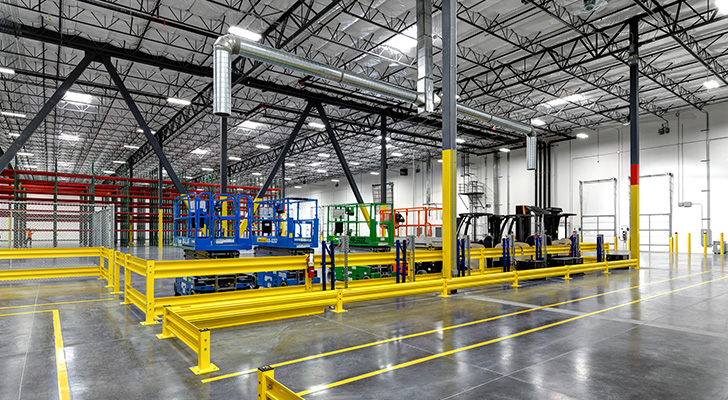
Considering the complexities of cold storage facilities, their construction demands a specialized approach and expertise. And with such a rapidly growing market, key players like Layton are primed and poised to step up.
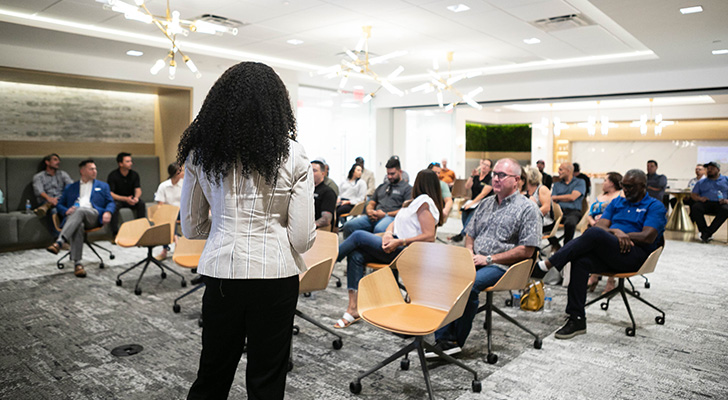
Layton depends heavily on the expertise and capabilities of our trade partners. Lead by Cherelle Cortez, our Trade Partner Engagement and Development team is focused on increasing the diversity and strength of our trade partners.

